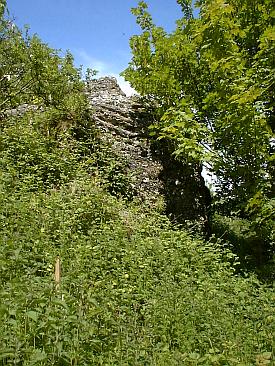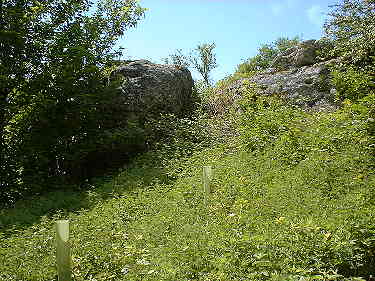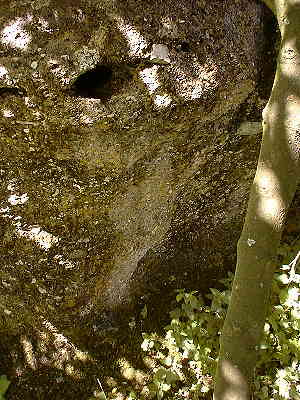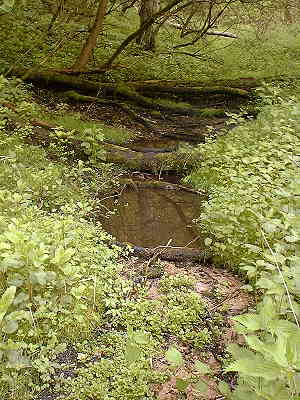|
|
|||
|
St Austin's Stone (& well?) -
Drewton St Austin's Stone is a large rock outcrop at the head of a wooded valley called Austin's Dale. The Rev Smith (1) relates the tradition that St Augustine visited the area and found the people worshiping this outcrop and so he climbed on top of the rock and preached his Christian message to them, before leading his new converts down the valley to be baptised in a nearby spring. The rock is a natural chalky conglomerate which has a large amount of flint embedded in it, while its partly porous nature means that water seeps out of the rock face in places. The Rev. Smith also noted the local tradition that a large part of the outcrop falls away every 7 years, but its size is never diminished as the rock 'grows' back again. He also adds that religious services were still occasionally held at the rock. Also of interest is a natural cavity, located about 2m up on the face of the outcrop (see pic on right). This cavity measures approx 20cm wide x 25 cm deep and was full of water on a visit in May 2000. Although tradition is silent regarding this small chamber there are boulders in Scotland with similar cavities which have a reputation as healing 'wells', where the water that collects in the hole being used as a cure for various diseases. For example Clach na Cruich (Stone of the measles) near Fernan and Fuaran na Druidh Chasad (well of the whooping cough) at Killin, both near loch Tay. Regarding the 'baptism' spring, the Rev Smith states that "....there is a spring beneath it (the outcrop) at no great distance" On the OS map the nearest spring is 500m down the valley, where several small springs seep out of the hillside to form a boggy area, before flowing away as a small stream (see pic on right). However it was not possible to identify a particular spring source that might relate to the story. Tradition derives the Austin name from St Augustine, but if he did ever pass this way then the people he encountered would have been of Anglo-Saxon or Scandinavian origin. In this case an alternative explanation of the Austin name could be the 'Aus-Stane' or 'Oss Stone'. Oss is a character in the Anglo Saxon runic alphabet and the ancient runic poems suggest Oss had a dual meaning of 'mouth' and 'god' - specifically Odin. The Oss-Stane could then mean Odin's Stone or the Mouth Stone or even the mouth of god stone. Taking another look at the photo of the cavity on the rock
'face' it is not difficult to see how this meaning might have applied to
the rock outcrop and why it may have been a focus of religious veneration
for over 1000 years. (1)Rev. W. Smith - Ancient Springs & Streams of the East Riding of Yorkshire. 1923.
|

|
||


